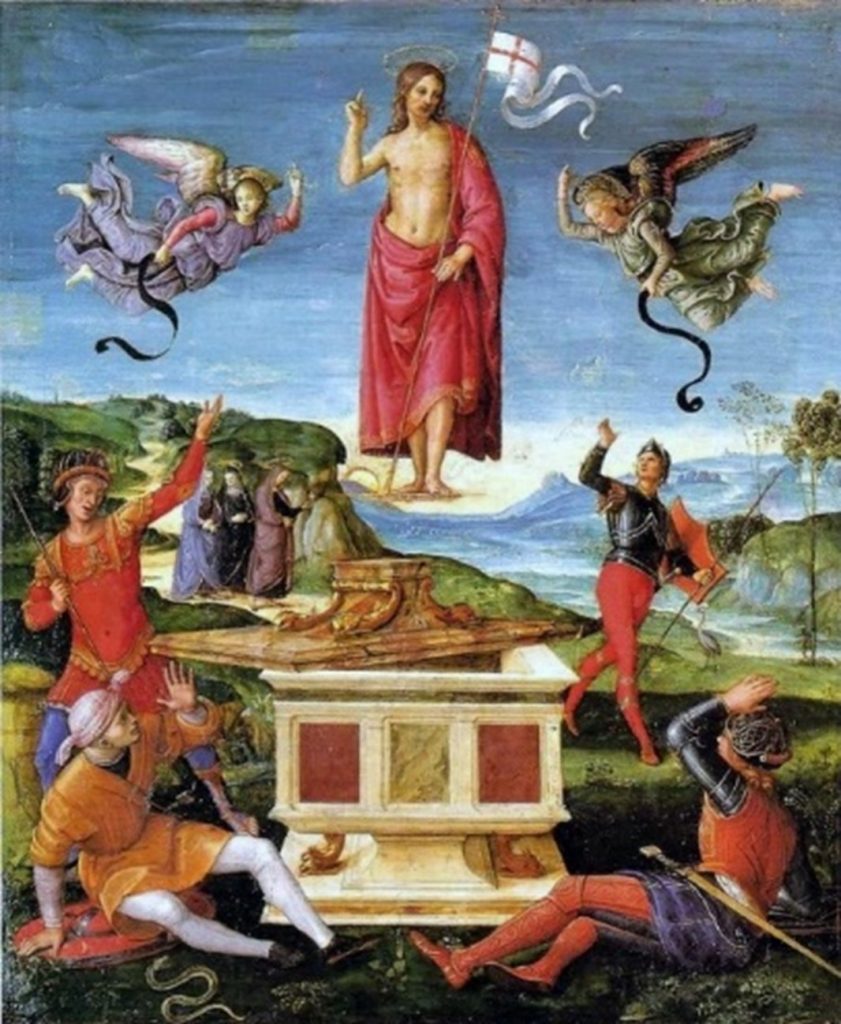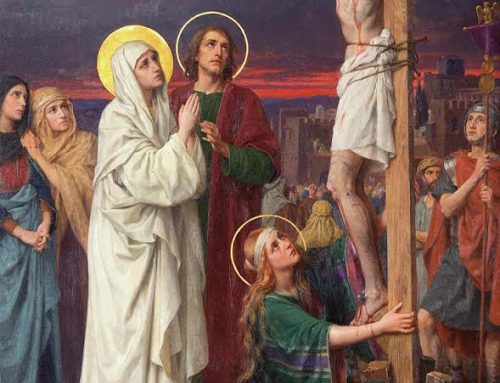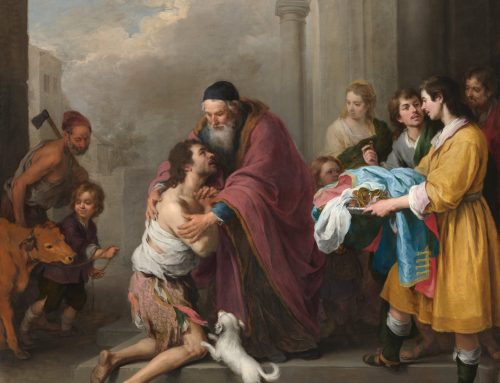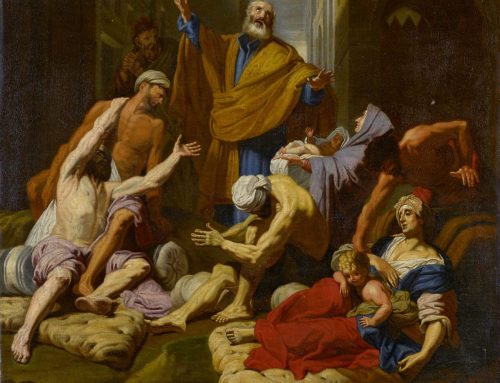
The Resurrection of Christ, Raphael, 1502.
“By a man came death: and by a Man the resurrection of the dead” (I Cor.15:21). The Church teaches, “We firmly believe, and hence we hope that, just as Christ is truly risen from the dead and lives forever, so after death the righteous will live forever with the risen Christ, and He will raise them up on the last day. The “resurrection of the flesh” means not only that the immortal soul will live on after death, but that even our ‘mortal body’ will come to life again” (CCC 990). We have faith that bodies will be resurrected, as we recite in the Apostles’ Creed, yet what will these bodies be like? We can look no further than to the first man, Adam, for insight and of course to the New Adam, Christ, who has the power to raise us up on the Last Day.
God gave Adam a natural life of body and soul, by which he was properly called a man. God also gave Adam the supernatural life of grace by which he was properly called a son of God. Yet Adam received other gifts, preternatural gifts. These gifts were above what was proper or natural to Adam as a man. The preternatural gifts God bestowed upon Adam, immortality, integrity, impassibility, and infused knowledge, show God’s intention for Adam’s life and by proxy our lives. Adam was to live forever with God (immortality). Adam was to live in such a way that his body was properly ordered to the powers of his soul (integrity). The world of emotions for Adam was fully under the control of his intellect and will. Adam was also to live in such a way that he couldn’t be harmed (impassibility). Adam had infused knowledge as well; he was created as an adult, knowing certain things upon his creation. Adam, and therefore the human race, lost immortality, integrity, and impassibility in the Fall. Adam also lost the supernatural gift of divine grace in his soul. We, as children of Adam, are born without this gift.
Through His death and resurrection, Christ, the new Adam, restores the gifts lost by the first Adam. We gain supernatural grace in our souls through the Sacraments, allowing us to live as children of God. But what about the other gifts lost? Christ restores those too. The Church teaches that resurrected bodies will be immortal, that is the soul will not be able to be separated from the body again. Resurrected bodies will also have infused knowledge, meaning they will not have to learn things as they do now, through the senses. Further, according to St. Thomas Aquinas, God will bestow four other gifts upon the resurrected body: impassibility, subtleness, agility, and clarity (Aquinas, Summa Contra Gentiles, IV, 86).
Impassibility
Just as Adam was created with the gift of impassibility, the resurrected body will be impassible, meaning the body will be incapable of any kind of physical harm. St. John writes, “And God shall wipe away all tears from their eyes; and death shall be no more. Nor mourning, nor crying, nor sorrow shall be anymore, for the former things are passed away” (Rev 21:4). Impassibility is to be differentiated from integrity, which describes the perfect condition of a resurrected body, its subordination to the powers of the soul. In other words, not only will the body rise to perfection and be repaired (integrity), but it will also be unable to experience any imperfections or corruptions in the future (impassibility), i.e., no change to it such as contracting an illness.
Subtlety
Another characteristic of the resurrected body is subtlety. Subtlety is the description of the resurrected body’s spiritualized nature as St. Paul described, “It is sown a corruptible body, it shall rise a spiritual” (I Cor 15:44). The Apostle John records in John 20:19 that the doors of the Upper Room were locked, yet Jesus came and stood in their midst. At first glance subtley can seem like a ghost-like quality, but this is not the case. Risen bodies will be true bodies, yet have some spirit-like qualities, such as the ability to penetrate objects.
Agility
Agility describes movement of the risen body. It is the aspect of the risen body that allows it to move like Jesus’ resurrrected body. Agility is described in the Catecheism of the Council of Trent thus: “The body shall be freed from the burden by which it is now pressed down; and shall acquire a capability of moving with the utmost facility and celerity whithersoever the soul pleases” (Catholic Church, The Catechism of the Council of Trent, 126). The glorified body will obey the soul with the greatest ease and speed of movement. We understand agility by contemplating our Resurrected Lord’s ability to bilocate and travel great distances instantaneously as described in several accounts in the Scriptures.
Clarity
Clarity, meaning bright-shining, is an aspect of the risen body much like Jesus’ body at the Transfiguration. It is a brightness which overflows from the soul’s glory. The Church expounds, “Now this brightness is a sort of refulgence redounding to the body from the supreme happiness of the soul, so that it is a sort of emanation from the bliss which it enjoys; and its communication is analogous to the manner in which the soul itself is rendered blessed, which is, by a participation of the divine happiness…There is one glory of the sun, another glory of the moon, and another glory of the stars; for one star [differs] from another star in glory: so also is the resurrection of the dead” (Catholic Church, The Catechism of the Council of Trent, 126).
Conclusion
With the glory of the resurrrected bodies in mind, we can understand the teaching of the Church on Christian burial. For most of its 2,000-year history, the Catholic Church only permitted burial, arguing that it best expressed the Christian hope in resurrection. The Congregation for the Doctrine of the Faith writes, “Following the most ancient Christian tradition, the Church insistently recommends that the bodies of the deceased be buried in cemeteries or other sacred places. In memory of the death, burial and resurrection of the Lord, the mystery that illumines the Christian meaning of death, burial is above all the most fitting way to express faith and hope in the resurrection of the body” (Vatican, Instruction Ad Resurgendum cum Christo, par. 3). In more recent times, the Church has explicitly allowed cremation as long as it didn’t suggest a denial of faith about resurrection. Guidance in 2016 from the Congregation of the Doctrine of Faith (Ad resurgendum cum Christo) repeats that burial is preferred over cremation. It does, however, describe guidelines for conserving ashes for the increasing numbers of Catholics who choose cremation for economic, ecological, or other reasons. The guidance also emphasized remains cannot be divided among family members or put in lockets or other mementos, nor can the ashes be scattered in the air, land, or sea since doing so would give the appearance of “pantheism, naturalism or nihilism”(Vatican, Instruction Ad Resurgendum cum Christo, par 7). Cardinal Ludwig Mueller, prefect of the Congregation of the Doctrine of Faith in a press conference regarding the 2016 guidance reiterated, “The dead body isn’t the private property of relatives, but rather a son of God who is part of the people of God.”[1]
As St. Paul writes, “If the Spirit of Him who raised Jesus from the dead dwells in you, He who raised Christ Jesus from the dead will give life to your mortal bodies also through his Spirit who dwells in you” (Rom 8:11). May we all be part of that great throng on the Last Day, bodily resurrected into perfection through our Lord, Jesus Christ.
[1] (https://www.theadvocate.com/nation_world/catholics-cremation-ashes-shouldnt-be-scattered-divided-or-kept-at-home-vatican-says/article_d91fa612-9b7f-11e6-af30-d7fef14170ed.html#:~:text=To%20set%20the%20faithful%20straight,church%20area%2C%20to%20hold%20them.





Leave A Comment